Licorice
[Family, Genus and Medicinal Parts] This product is the rhizome and root of the leguminous plant licorice.
[Nature, flavor and meridians] Sweet, flat. Enter the Twelve Classics.
[Efficacy] Buzhong and Qi, purge fire and detoxify, moisten the lungs and remove phlegm, moderate the properties of the medicine, relieve anxiety and relieve pain.
[Clinical Application] 1. Used for diseases such as weakness of the spleen and stomach and insufficient Qi and blood.
Licorice has a sweet taste and a mild nature. It can replenish spleen and stomach deficiency and benefit the middle qi. For patients with weak spleen and stomach, it is often used in combination with dangshen, atractylodes, tuckahoe and other qi-tonifying and spleen-tonifying drugs. For patients with insufficient heart-blood and heart-yang, it can be used with blood-tonifying and yin-tonifying drugs. It should be used in combination with medicines that warm the heart and relieve yang, such as donkey-hide gelatin, raw rehmannia, Ophiopogon japonicus, ginseng, cassia twig, etc.
2. Used for sores, swelling and pain in the throat.
When used raw, licorice can purge fire and detoxify, so it is often used for sores and carbuncles. It is often combined with heat-clearing and detoxifying drugs such as honeysuckle and forsythia. For throat swelling and pain, it can be used with platycodon, burdock, etc., which has the effect of clearing away heat and soothing the throat. effect.
3. Used for cough and asthma.
This product is sweet, soothes and moistens the lungs, has the effect of dispersing phlegm and relieving cough. It is clinically used to treat cough and wheezing. It is often used in combination with phlegm-removing and cough-relieving medicines as an auxiliary product. Because of its mild nature, it can be used together with cough and asthma due to cold lung or cough due to lung heat.
4. Used for acute abdominal cramps and pain.
This product has the effect of relieving cramps and pain. It is often combined with peony to treat cramps and pain in the abdomen.
In addition, licorice can also moderate the properties of medicines, and has the effect of reducing or alleviating the potency of medicines. Ancient herbal literature also contains records that this product has antidote and poisoning effects, which can be studied.
[Prescription names] Raw licorice, raw grass, powdered licorice (used raw, mostly used for purging fire, detoxifying, relieving pain and relieving pain.), Zhigancao, Zhicao (used for honey, mostly used to replenish the body and replenish qi.), Qingzhicao (For stir-frying.)
【General dosage and usage】Five to three qian, decoct and take.
[Note] 1. Licorice is a commonly used medicine. It is generally believed that this product is only used as an auxiliary and flavoring in prescriptions. In fact, according to the experience of clinical practice, it does have certain effects, such as Zhigancao Decoction to nourish the heart, It is used as the main medicine to invigorate the heart and yang, licorice and dried ginger decoction to warm and moisturize the lungs and spleen, peony and licorice decoction to relieve anxiety and relieve pain, Ganju decoction to clear away phlegm and sore throat, and Yinhua and licorice decoction to clear away heat and detoxify.
2. Licorice can also alleviate the medicinal properties. For example, Sini Decoction uses this product to alleviate the warming effects of dried ginger and aconite, and Tiaoweichengqi Decoction uses this product to alleviate the attacking effects of rhubarb and Glauber’s salt.
3. Licorice is sweet and soothing. It can cause suffocation and stuffiness when used by those with dampness in the middle of the body and abdominal distension, so care must be taken when using it.
[Examples of prescriptions] Zhigancao Decoction “Treatise on Febrile Diseases”: Zhigancao, ginger, ginseng, rehmannia glutinosa, cinnamon twigs, donkey hide gelatin, Ophiopogon japonicus, hemp seeds, jujube, and wine can treat palpitations and blocked pulses.
[Excerpt from literature] “Ben Jing”: “It regulates cold and heat evil qi in the five internal organs, strengthens bones and bones, grows muscles, doubles energy, eliminates sores and swelling, and detoxifies.”
“Bie Lu”: “It warms the middle and lowers the qi, relieves irritability and shortness of breath, hurts the organs and coughs, quenches thirst, unblocks the meridians, promotes blood and qi, and detoxifies hundreds of medicines.”
“Medicinal Usage”: “When used raw, it can purge fire and heat, and when cooked, it can dispel surface cold, relieve sore throat, eliminate pathogenic heat, slow down healthy qi, nourish yin and blood, nourish the spleen and stomach, and moisten the lungs.”
“Soup and Materia Medica”: “licorice is used in Fuzi Lizhong Decoction…, and licorice is used to regulate the stomach and retain qi…, which means to relieve it; Xiaobupleurum has the coldness of firewood and qin, and the warmth of ginseng and half, and it is softened by licorice. “Use Jianzhong Decoction to nourish the middle and relieve spleen deficiency.”
Where are the main medicinal parts of licorice?
Parts of licorice used as medicine:
Legume Glycyrrhiza uralensis Fisch., Glycyrrhiza inflata Bat. or Glycyrrhiza glabra L.
Of dry roots and rhizomes.
Characteristics of the medicinal parts of licorice:
Licorice root is cylindrical, 25~100cm long and 0.6~3.5cm in diameter. The outer skin varies in tightness. The surface is reddish brown or gray brown, with obvious longitudinal wrinkles, grooves, lenticels and sparse fine root marks.
The texture is solid, the cross-section is slightly fibrous, yellow-white, powdery, with obvious cambium rings, radial rays, and some cracks.
The rhizome is cylindrical, with bud marks on the surface and pith in the middle of the cross section. The smell is slight and the taste is sweet and special.
The roots and rhizomes of Licorice are thick and woody, some are branched, and the outer skin is rough, mostly gray-brown or grey-brown. It is hard in texture, has more wood fibers and is less powdery.
The rhizome has many adventitious buds and is thick.
How is licorice recorded in ancient historical books?
“Herbal Classic”: “It regulates cold and heat evil qi in the five internal organs, strengthens bones and muscles, increases muscle strength, eliminates sores and swelling, and detoxifies.”
“Famous Doctors”: “Warms the middle and lowers the Qi, troubles the lungs and shortness of breath, hurts the organs and coughs, quenches thirst, unblocks the meridians, benefits Qi and blood, and relieves the toxins of hundreds of medicines.
“Rihuazi Materia Medica”: “Soothes the soul and calms the soul. Replenishes the five fatigues and seven injuries, and relieves all weakness, palpitations, boredom, and forgetfulness. It opens the nine orifices, sharpens the hundreds of meridians, and nourishes the essence and qi.”
“Illustrated Book of Materia Medica”: “Licorice can detoxify hundreds of medicines and is the key to all medicines.
“Pearl Sac”: “Nourishes the blood and nourishes the stomach.
“Compendium of Materia Medica·Volume 12”: “Relieves fetal poisoning and epilepsy in children, reduces fire and relieves pain.
Function and efficacy
Licorice has the functions of replenishing qi and replenishing the heart, dispelling phlegm and relieving cough, detoxifying, relieving pain and relieving pain, and alleviating medicinal properties.
What are the main functions and clinical applications of licorice?
Licorice is used for weakness of the spleen and stomach, fatigue and fatigue, palpitations and shortness of breath, cough with excessive phlegm, acute pain in the epigastrium and limbs, carbuncle and sores, and relieves drug toxicity and harshness.
Spleen deficiency syndrome:
Often used together with ginseng and atractylodes.
Heart Qi deficiency syndrome:
To treat insufficient heart qi, inability to pump blood vessels, intermittent pulses, as well as deficiency of yin and blood, depletion of blood vessels, and heart failure to nourish the heart, Zhigancao is often used, and is compatible with ginseng, donkey-hide gelatin, raw rehmannia glutinosa, etc.
cough:
To treat wind-cold cough, it can be used equally with ephedra and bitter almond;
To treat wind-heat cough, it can be used equally with mulberry leaves and bitter almonds;
To treat cough with excessive phlegm, it can be used with pinellia and tangerine peel;
To treat dry cough with no or little phlegm, it can be used equally with Adenophora and Ophiopogon japonicus.
Abdominal pain, acute pain in limbs:
Always with white peony root.
Heat poisonous sores, sore throat, drug and food poisoning:
To treat heat-induced sores, it can be used alone or in combination with honeysuckle, forsythia, and purpurea;
To treat swelling and pain in the throat caused by heat and poison, it can be used alone or together with Scrophulariaceae, Ophiopogon japonicus, and Platycodon grandiflorum; this product also has a certain detoxification effect on multiple drugs or food poisoning.
Reconcile medicines:
It is mostly used in compound prescriptions. It can reduce the poison of poisons, relieve the heat of hot drugs, and relieve the coldness of cold drugs. It can harmonize and not compete with those who have mixed cold and heat, and can correct the peculiar smell of the medicines in the prescription. Easy to take.
What other benefits does licorice have?
In my country’s traditional food culture, some Chinese medicinal materials are often widely eaten as food ingredients among the people, that is, substances that are both food and Chinese medicinal materials according to tradition (i.e., edible medicinal substances). According to documents issued by the National Health Commission and the State Administration for Market Regulation, licorice can be used as both medicine and food within a limited range of use and dosage.
Commonly used medicinal recipes for licorice are as follows:
Chickenpox in children:
10g mung beans, 10g adzuki beans, 10g black beans, 3g raw licorice.
Add water to soak for 1 hour, bring to a boil, and simmer until thoroughly cooked. The above dosage is for one dose, take 2 to 3 times a day.
The old man suffered from apoplexy, heat poison, and felt depressed:
30g licorice, 80g black beans, 15g ginger. Take 400mL of water, decoct 200mL, remove residue, and take it slowly.
Stomach cancer pain:
20g of licorice and 30g of white peony root. Decoction in water.
What are the compound preparations containing licorice?
Zhigancao soup:
Replenishing qi and nourishing yin, unblocking yang and rejuvenating pulse. It mainly treats symptoms of weakness of yin and blood and yang qi, malnutrition of the heart and pulse, deficiency of the lungs, etc.
Simiao Yong’an Soup:
Clear away heat and detoxify, activate blood circulation and relieve pain. It is mainly used to treat gangrene caused by excessive heat and poison. The affected limb may be dark red, slightly swollen, burning, ulcerated and rancid, with severe pain, or fever, thirst, red tongue and rapid pulse. (Anthrax is a disease name in traditional Chinese medicine. At the beginning of this disease, patients often experience cold and numb limbs. Later, the toes will gradually develop necrosis and falling off, black rot and ulceration, and the wound will not heal for a long time. It belongs to the category of vascular diseases. )
Four Gentlemen Soup:
Replenishing qi and strengthening the spleen. It mainly treats spleen and stomach qi deficiency syndrome. Pale complexion, low voice, shortness of breath and fatigue, less food and loose stools, pale tongue with white coating, and weak pulse.
Linggan five-flavor ginger soup:
Warm the lungs and transform the drink. It is mainly used to treat cough due to cold drink. Coughing up a lot of sputum, which is thin and white in color, or like saliva, fullness and discomfort in the chest, white and slippery tongue coating, and stringy and slippery pulse. Sanao soup:
Guanfei relieves the symptoms. It mainly treats exogenous wind-cold and lack of lung qi. Cold nose, heavy sound, loss of speech, or cold, headache, dizziness, tense limbs, cough with excessive phlegm, chest tightness and shortness of breath, no sweat, no thirst, white coating, and floating pulse.
Licorice Xiexin Decoction:
Harmonizes the stomach and nourishes the middle, lowers the qi and eliminates sores. Mainly used to treat stomach qi deficiency and pimple syndrome
Ganmai jujube soup:
Nourishing the mind and calming the nerves, balancing the priorities. Mainly used to treat impatience. Mentally dazed, often sad and ready to cry, unable to control himself, disturbed in mind, restless in sleep, and even abnormal speech and behavior, frequent yawning, pale red tongue with less coating, and thready pulse.
Modern research progress on licorice
This product has anti-peptic ulcer, hepatoprotective, antispasmodic, anti-arrhythmic, antitussive and expectorant, detoxifying, anti-inflammatory, antibacterial, antiviral, anti-allergic, adrenocortical hormone-like effects, anti-tumor, anti-mutation, etc. a pharmacological effect.
How to use
Licorice can be taken in decoction, soaked in water, cooked in porridge or soup. But no matter which method is used, it needs to be taken according to the doctor’s instructions.
How to use licorice correctly?
·When licorice decoction is taken orally, the usual dosage is 2~10g; when used to reconcile medicinal properties, the dosage is about 10g; when used for poisoning rescue, the maximum dosage can be 60g.
When licorice is used externally, take an appropriate amount of licorice and boil it in water to wash the stains; or grind it into powder and apply it, it has a therapeutic effect on the pain of various sores.
It should be used raw to purge fire and detoxify, and it should be used broiled to replenish qi and relieve acute symptoms. Different preparation methods have different effects, but the medication method is the same. Please follow your doctor’s advice for specific medication.
Licorice is usually taken in decoction or decoction. It can also be made into powder or pills. However, the use of Chinese medicinal materials requires syndrome differentiation and treatment, and should be used under the guidance of professional Chinese medicine practitioners. They should not be used at will, let alone listen to traditional Chinese medicine prescriptions and advertisements.
Common Chinese medicine combinations are as follows:
·Licorice and white peony: licorice can replenish qi and relieve stress; white peony can nourish blood and soften the liver. The two medicines are combined and have strong pain-relieving and pain-relieving properties. They can treat cramping and pain in the epigastrium or limbs. In addition, licorice can also be used for daily health care. Commonly used methods of consumption are as follows:
Cook porridge (licorice and mung bean soup): 10g of licorice and 30g of mung beans. Put licorice and mung beans into the pot, add appropriate amount of water, bring to a boil over high heat and then reduce to low. Turn up the heat and cook until the mung beans bloom, then add sugar to taste. Remove the licorice when serving. It has the effect of clearing away heat and poison, diuresis and reducing swelling, and is suitable for diseases such as summer heat polydipsia, erysipelas, heat dysentery, and dysuria.
Soak in water (raw licorice drink): 20g of Bletilla striata, 50g each of raw licorice, adenophora, Ophiopogon japonicus, platycodon, and scrophulariaceae. Grind the above medicinal materials into powder, mix evenly, put 15g of medicinal powder in a cup of water each time, pour boiling water and soak for 1 hour, once a day. It has the effects of clearing the throat, moistening the lungs and relieving cough.
Note: Licorice tends to help dampness and qi stagnation, so it should not be taken by those with excessive dampness.
How to prepare licorice?
·Licorice: Take the raw medicinal materials, remove impurities, wash, moisten, peel or scrape off the skin, cut into thick slices, and dry. Sieve to remove crumbs. Those with skin are called licorice slices, and those without skin are called pink licorice slices.
Licorice root: Take the clean licorice, chop off the tail (i.e. the small part) of the licorice with a knife, soak it in water, cut it into small sections, dry it and remove it into pieces. Honey licorice: The one with skin is called Zhigancao or Zhicao, and the one without skin is called Zhifencao or Honeyfencao. Take the refined honey, dilute it with an appropriate amount of boiling water, add it to pure licorice slices or powdered licorice slices, mix well, and moisten it. Place in a frying container. Use slow fire and hold. Fry until old yellow and no longer sticky to your hands, take out and let cool. For every 100kg of licorice slices, use 25kg of refined honey.
Which drugs require special attention when using licorice at the same time?
It should not be used together with spurge, genkwa, kansui, and seaweed.
The combined use of traditional Chinese medicine and Chinese and Western medicine requires syndrome differentiation and clinical individualized treatment.
Medication instructions
Licorice has a sweet taste and is easy to help dampness and qi obstruction, so it should not be taken by those with excessive dampness.
What precautions should be taken when using licorice?
Licorice root, Daphne genkwa, kansui, and seaweed should not be used together.
Licorice has a sweet taste and can help dampness block Qi and make people feel full. Therefore, it should not be taken by those with excessive dampness, fullness in the chest and abdomen and vomiting. .
Long-term use of large amounts of this product may cause adverse reactions such as edema, increased blood pressure, sodium retention, decreased blood potassium, limb weakness, numbness, dizziness, headache, etc. Therefore, it is not suitable to take large amounts for a long time. Patients with various types of edema, kidney disease, hypertension, hypokalemia, and congestive heart failure should not take it. If it must be taken in large amounts for a long time, in order to prevent or reduce side effects such as sodium stagnation, potassium excretion, and edema, it can be used with an appropriate amount of diuretics such as Alisma and Poria cocos, and a low-salt diet is recommended. If adverse reactions such as edema and high blood pressure occur during taking, the dosage should be reduced immediately or discontinued. If hypokalemia occurs, oral potassium supplementation can be given.
Licorice should not be used together with spurge, genkwa, kansui, and seaweed. .
·Do not eat together with carp, as eating together will cause poisoning.
·Pregnant and lactating women: If you are pregnant, planning to become pregnant, or are breastfeeding, please inform your doctor in time and consult whether traditional Chinese medicine can be used to treat the condition.
·Children: Medication for children must be carried out under the guidance of a doctor and adult supervision.
·Please keep the medicinal materials properly and do not give the medicinal materials you use to others.
How to identify and use licorice?
This product is cold in nature and warm in roasting. For clinical purposes, raw licorice is suitable for clearing away heat and detoxifying. For nourishing the spleen and replenishing qi, and relieving pain and relieving pain, roasted licorice is suitable.
If it is used to moisten the lungs and relieve cough or to relieve the medicinal properties, it can be used raw or burnt according to the situation.
Most frequently asked questions by patients
What are the ingredients of Zhigancao Decoction?
Zhigancao Decoction can replenish qi, blood, yin and yang, nourish the heart, lungs, spleen and kidneys, and is also called Fumai Decoction.
The prescription includes raw rehmannia glutinosa, donkey-hide gelatin, Ophiopogon japonicus, hemp seeds, cinnamon twigs, ginger, jujubes, licorice, and ginseng (sake).
Zhigancao decoction has the effects of nourishing yin and nourishing blood, replenishing qi and unblocking yang, and restoring pulse and stabilizing palpitations. It is used to treat deficiency of yin and blood, weakness of yang qi, and consumptive lung failure. The combination of Chinese medicine and Western medicine requires syndrome differentiation and treatment, clinical Individualized treatment. If you are taking other medications, please consult your doctor before taking these medications and inform your doctor of all diagnosed medical conditions and treatments you are receiving.
What are the possible adverse reactions of taking licorice?
After taking this product in large doses or in small doses for a long time, about 20% of people may experience adverse reactions such as edema, limb weakness, numbness, dizziness, headache, increased blood pressure, hypokalemia and other adverse reactions;
The elderly and those with cardiovascular and kidney diseases are prone to hypertension and congestive heart disease.
Long-term use of glycyrrhizin may cause lactation in non-lactating women.
Licorice – gancao
$42.88 – $3,258.80
+ Free ShippingLicorice – gancao
Licorice is a Qi-tonifying medicine, which is the dried root and rhizome of the leguminous plants Licorice, Glycyrrhiza uralensis or Glycyrrhiza glabra.
Licorice is sweet and mild in nature, and enters the heart, lung, spleen and stomach meridians.
Licorice is sweet, nourishing and moistening. It is cool in raw form and warm in roasted form. It mainly enters the spleen and lung meridians, and also enters the stomach and heart meridians. It can not only replenish Qi and tonify the middle, but also relieve pain, moderate the medicinal properties, and also remove phlegm, relieve cough and detoxify. Honey roasting has strong Qi-tonifying and relieving effects; raw use can purge fire and detoxify.
This product contains triterpenoid saponins and flavonoids.
| Weight | 1 kg, 10 kg, 100 kg |
|---|



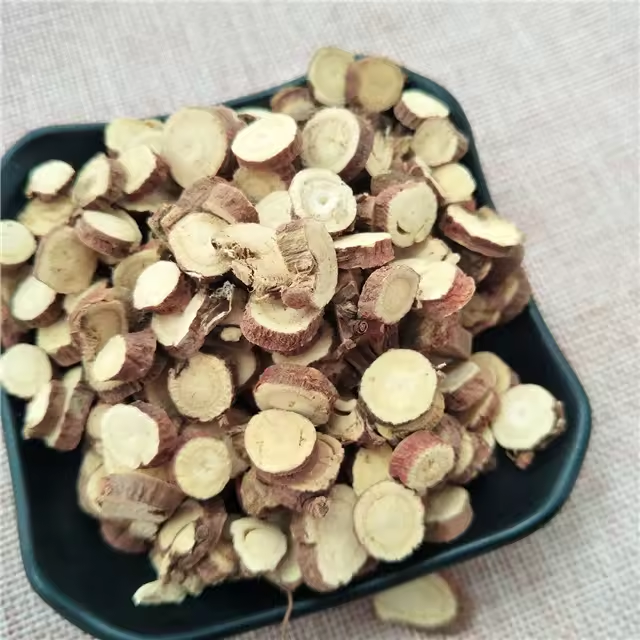














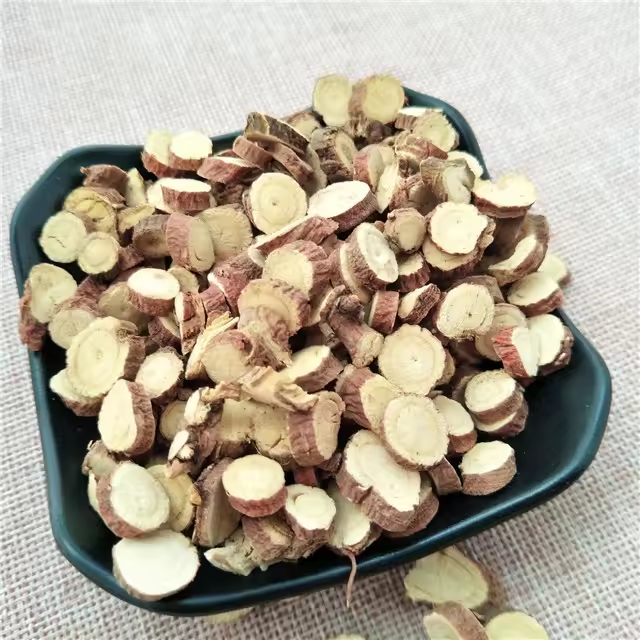
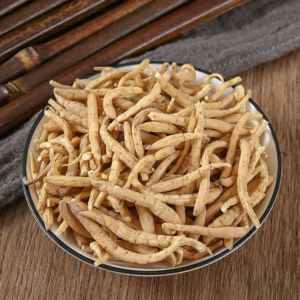
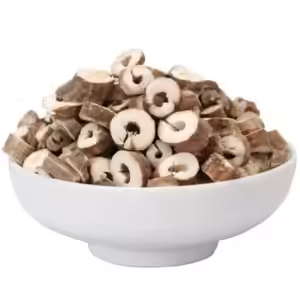
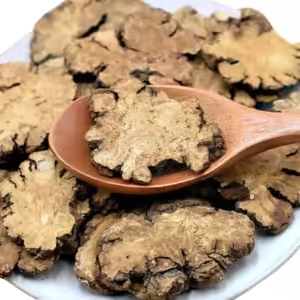
Reviews
There are no reviews yet.